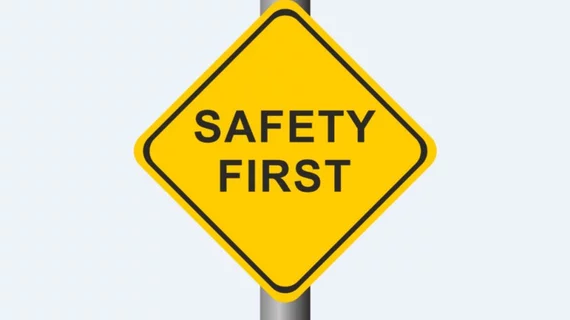50% of employees don’t always report safety events at academic radiology department
Patient safety is a foremost concern for radiology departments—but current measures of a safe culture often do not account for the human factors that contribute to the nonreporting of safety issues.
A recent single-institution study published online May 15 in Radiology found “of employees in a large academic radiology department, 50 percent do not attain 100 percent reporting of safety events,” wrote corresponding author Bettina Sievert, MD, from the department of radiology at Beth Israel Deaconess Medical Center, and colleagues.
Authors set out to test the role of human factors, notably authority gradients, as potential barriers to safety concern reporting. They sent a HIPPA-compliant online questionnaire link to all radiology staff members that included the following questions: frequency of speaking up about safety concerns, perceived barriers to speaking up and the annual number of safety concerns respondents were unsuccessful in reporting.
A total of 363 employees completed the survey—half (182 employees) reported always speaking up about safety concerns, 134 (37 percent) answered they spoke up most of the time, 36 (10 percent) reported speaking up sometimes, seven (2 percent) rarely spoke up and four (1 percent) never spoke up.
“Voicing a concern about an uncertain observation may be especially difficult in medicine because of an unspoken societal expectation that the physician or principle health care provider is all-knowing in his or her work area,” authors wrote.
However, Sievert et al. argued that because medical information is expected to double every 73 days by 2020, it is an “unrealistic expectation” for a single professional to know everything.
“Much patient and physician education is needed on this topic to enable necessary cultural change,” Sievert and colleagues concluded.
Barriers are high
Authors noted the Joint Commission currently requires its accredited institutions to participate biannually in a safety attitude questionnaire to remain accredited, but it fails to survey potential human factors that may affect a culture of safety.
Therefore, Sievert and colleagues also collected information about which specific barriers resulted in nonreporting for safety measures.
The most common barrier, reported by 69 percent of respondents who did not always speak up, was “reporting threshold too high.” That was followed by the presence of an authority gradient (67 percent), a fear of disrespect (53 percent) and a lack of listening (53 percent).
“These barriers are not investigated in the currently widely used Agency for Healthcare Research and Quality safety attitude questionnaire, which is a performance measure of The Joint Commission; however, in our study these human factors did contribute to nonreporting in 50 percent of personnel in an academic radiology department,” authors wrote.
The study found radiology residents and fellows made up the highest percentage of respondents who did not always speak up (89 percent). Also, the highest number of staff who did not always speak up was the imaging technologists (92 respondents), but that group was also the largest within the department surveyed.
“Human factors are important barriers to safety event reporting in an academic radiology department and contribute to nonreporting in 50 percent of respondents … to pursue 100 percent reporting of safety events, efforts to address underreporting will need to include strategies directed toward elimination of those human factor barriers as well as flattening of authority gradients,” the authors wrote.

